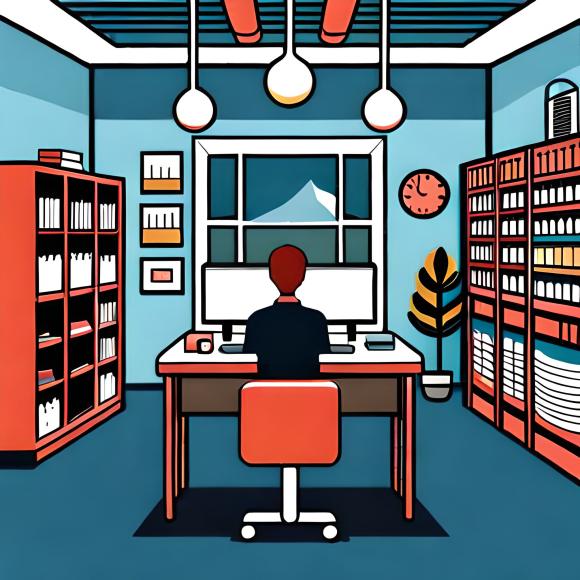Introduction
When it comes to printing, achieving consistent and reliable results is essential. Whether you’re a professional designer, a student working on a project, or simply printing personal documents, the quality of your prints matters. In this article, we will explore the importance of printing quality and the common challenges faced in achieving consistent results. We will also delve into the basics of printing, the essentials of preparing your printing environment, choosing the right printer, handling different types of printing projects, and mastering print software. Additionally, we will discuss color management, troubleshooting common print quality issues, maintaining and cleaning your printer, preventing paper jams, utilizing print preview and proofing, printing from different devices, best practices for print scanning, eco-friendly printing tips, enhancing print durability, and even advanced printing techniques. So, let’s dive in and uncover the secrets to achieving remarkable printing results every single time!
Why Printing Quality is Important
Printing extends beyond simply putting ink on paper. It is a way to bring our creations to life and showcase our ideas to the world. Whether you’re printing marketing materials, photographs, or important documents, the quality of your prints reflects the quality of your work. Crisp and vibrant prints convey professionalism and attention to detail, leaving a lasting impression on your audience. Furthermore, high-quality prints enhance readability and visual appeal, ensuring that your message is effectively conveyed. Therefore, achieving consistent and reliable printing results is crucial in order to maintain your reputation and make a positive impact.
Common Challenges Faced in Achieving Consistent Results
While we all strive for perfection in our printing endeavors, there are several common challenges that may hinder our quest for consistent results. These challenges include color inconsistencies, paper jams, print quality issues, and compatibility problems with various devices and software. Understanding and overcoming these challenges is key to attaining the desired level of printing excellence.
Understanding the Basics of Printing

Before we delve into the specifics of achieving consistent and reliable results, let’s take a moment to explore the basics of printing. There are different types of printing methods, each with its own unique advantages and applications. From the traditional offset printing to the modern digital printing, understanding the strengths and limitations of these methods can aid in selecting the most suitable technique for your printing needs. Additionally, the choice of paper and ink plays a vital role in determining the overall print quality. Whether you opt for glossy, matte, or specialty papers, or decide between dye-based or pigment-based inks, each option contributes to the final result. Moreover, calibration and color management ensure accurate reproduction of colors, keeping them consistent across various prints and devices.
Preparing Your Printing Environment
Creating an optimal printing environment is crucial for achieving consistent and reliable results. A well-lit workspace allows you to accurately assess the colors and details of your prints. Proper lighting minimizes the chances of misjudging color accuracy and ensures that you detect any potential printing flaws. Moreover, maintaining optimal temperature and humidity levels in your printing environment is essential. Extreme temperatures and humidity can affect the performance of your printer and cause unsatisfactory results. By keeping your workspace within the recommended temperature and humidity range, you provide the ideal conditions for flawless printing. Additionally, regular cleaning and maintenance of your equipment, such as printheads and ink cartridges, will prolong their lifespan and prevent any issues that could impact print quality.
Choosing the Right Printer

When it comes to printers, there are two primary options available: inkjet and laser printers. Inkjet printers are known for their versatility, making them suitable for both text and photo printing. On the other hand, laser printers excel in producing high-quality and fast prints, although they may be more suitable for text-heavy documents. Selecting the appropriate printer for your needs is crucial. Consider factors such as printing speed and cost per page to ensure that your chosen printer aligns with your requirements. By choosing the right printer, you lay the foundation for achieving consistent and reliable printing results.
Handling Different Types of Printing Projects
Printing text documents and photos require different approaches to achieve optimal results. For text documents, it is important to choose the right font, size, and formatting to ensure readability. Additionally, paying attention to margins and line spacing can enhance the overall visual appeal. On the other hand, when it comes to photo printing, using high-resolution images and selecting the appropriate paper type are essential. Familiarize yourself with the best practices for each type of printing project to maximize the quality of your prints. Furthermore, challenges may arise when dealing with different paper sizes and materials. By understanding the intricacies of handling various paper sizes and materials, you can overcome any obstacles and achieve consistent results.
Setting Up Printer Preferences

Exploring the printer settings and options is crucial for adapting your prints to your specific needs. Adjusting the dots per inch (DPI) and paper orientation can significantly impact the overall print quality. Higher DPI values offer finer details, but may also result in slower printing speeds. Similarly, the choice of paper orientation can affect the overall visual appearance. Understand the advanced features available in your printer preferences and utilize them based on your unique requirements. Familiarize yourself with these options to enhance your control over the printing process and achieve the best results every single time.
Mastering Print Software
Print software plays a significant role in ensuring accurate and efficient printing. Choosing the right print software can streamline your printing workflow, offering features such as print management and print previews. By exploring the available print software options and discovering their benefits, you can enhance your printing experience and minimize any potential issues. Troubleshooting common print software issues is also essential to eliminate any obstacles that may hinder your printing quality.
Color Management in Printing
Managing color is an integral part of achieving consistent and reliable printing results. Understanding color profiles and gamut helps ensure accurate color reproduction. Calibrating your monitor to match the printer’s color output is crucial in achieving consistency across various devices. By utilizing color management tools and techniques, you can minimize discrepancies and achieve remarkable color accuracy in your prints.
Troubleshooting Print Quality Issues
Despite our best efforts, print quality issues can sometimes occur. Familiarizing yourself with common print quality problems and their causes empowers you to diagnose and fix these issues effectively. Whether it’s dealing with banding, smudging, or streaking, following a systematic approach to troubleshooting can help identify the root cause and implement the appropriate solution. Seeking professional help when needed is also advisable to tackle more complex printing issues.
Maintaining and Cleaning Your Printer
Regular maintenance routines are essential in keeping your printer in optimal condition. Cleaning printheads and ink cartridges removes any clogs or debris that could affect print quality. By following the manufacturer’s recommendations for maintenance intervals, you can ensure smooth and consistent printing. Additionally, extending the life of your printer can be achieved through proper care and maintenance, resulting in more reliable and longer-lasting printing results.
Preventing Paper Jams
Paper jams are a common nuisance in printing that can disrupt your workflow and damage your prints. Understanding the causes of paper jams and implementing proper handling and loading techniques can minimize the occurrence of such incidents. By following best practices and clearing paper jams efficiently, you can save time and effort, ensuring uninterrupted printing sessions.
Utilizing Print Preview and Proofing

The benefits of print preview are often underestimated. Taking advantage of print preview allows you to visualize your prints before they are sent to the printer. This helps you identify any errors or formatting issues, preventing costly mistakes and wastage of resources. Additionally, incorporating proofing techniques, such as color proofs or test prints, adds an extra layer of assurance, ensuring that your final prints meet your expectations. Optimizing print settings based on these previews and proofs ultimately leads to consistent and reliable printing results.
Printing from Different Devices
Printing is not limited to desktop computers anymore. With the advancement of technology, printing from mobile devices and tablets has become increasingly common. Understanding how to print from different devices and utilizing wireless printing and cloud printing options provides flexibility and convenience. Familiarize yourself with the specific printing requirements of each device and explore the available options to seamlessly print from your preferred devices.
Best Practices for Print Scanning
Print scanning is often an integral part of digitizing and archiving important documents. To get the most out of your scanner, consider factors such as resolution and file formats. Higher scanning resolutions provide more details, but also result in larger file sizes. Choosing the appropriate file format ensures compatibility and minimizes data loss. Additionally, organizing and archiving scanned documents systematically allows for easy retrieval and reference.
Eco-Friendly Printing Tips
Printing sustainability is a growing concern for many individuals and businesses. By adopting eco-friendly printing practices, you can reduce paper and ink consumption. Utilizing duplex printing effectively, which enables printing on both sides of the paper, can significantly reduce paper usage. Additionally, responsibly recycling and disposing of printer materials contribute to a greener environment and a more sustainable future.
Enhancing Print Durability
Print durability is an important aspect, especially when it comes to preserving memories or creating long-lasting prints. Choosing durable paper and ink ensures that your prints can withstand the test of time. Certain papers and inks exhibit resistance to fading and damage, ensuring that your prints remain vibrant and intact for years to come. Furthermore, proper storage and handling techniques safeguard your prints from external factors that could compromise their quality.
Advanced Printing Techniques
Taking your printing to the next level involves exploring advanced techniques and possibilities. Special effects and finishes, such as embossing or spot UV, add a unique touch to your prints, making them stand out. Furthermore, venturing into the realm of 3D printing opens up a whole new world of creativity and innovation. Printing on unconventional materials, such as wood or fabric, offers endless possibilities for personalized and unique prints. By incorporating these advanced techniques, you can elevate your printing results to new heights.
Summary
Achieving consistent and reliable printing results every single time is a goal worth pursuing. Through understanding the basics of printing, preparing a suitable printing environment, choosing the right printer, handling different printing projects, mastering print software, managing color effectively, troubleshooting print quality issues, maintaining and cleaning your printer, preventing paper jams, utilizing print preview and proofing, printing from different devices, adopting best practices for print scanning, practicing eco-friendly printing, enhancing print durability, and exploring advanced printing techniques, you are equipped with the knowledge and tools to achieve exceptional printing results.
Conclusion
Consistent and reliable printing results are within your reach. By understanding the intricacies of printing, optimizing your printing environment, choosing the right equipment, implementing best practices, and exploring advanced techniques, you can achieve exceptional prints every single time. Whether you’re a professional seeking perfection or an individual aiming for high-quality personal prints, following the guidelines outlined in this article will set you on the path to printing excellence. So, take these insights, apply them to your printing endeavors, and witness the transformation in your printing results. Happy printing!
FAQs (Frequently Asked Questions)
How often should I calibrate my printer?
Printer calibration should be performed regularly. It is generally recommended to calibrate your printer at least once every two to three months, or whenever you notice any significant changes in color accuracy.
Can I use third-party ink or toner cartridges?
While it is possible to use third-party ink or toner cartridges, it is important to keep in mind that the quality and reliability may vary. OEM (Original Equipment Manufacturer) cartridges are specifically designed for optimal performance, but if you choose to use third-party cartridges, ensure they are compatible with your printer model.
What is the ideal printing temperature and humidity level?
The ideal printing temperature ranges from 20 to 25 degrees Celsius (68 to 77 degrees Fahrenheit) with a humidity level of 40 to 60%. These conditions provide a stable printing environment, minimizing the chances of print quality issues.
Can I print borderless photos?
Yes, most modern printers support borderless printing. However, it is important to check your printer’s specifications and settings to ensure that it offers this feature. Additionally, using the correct paper type and size is crucial for achieving successful borderless prints.

